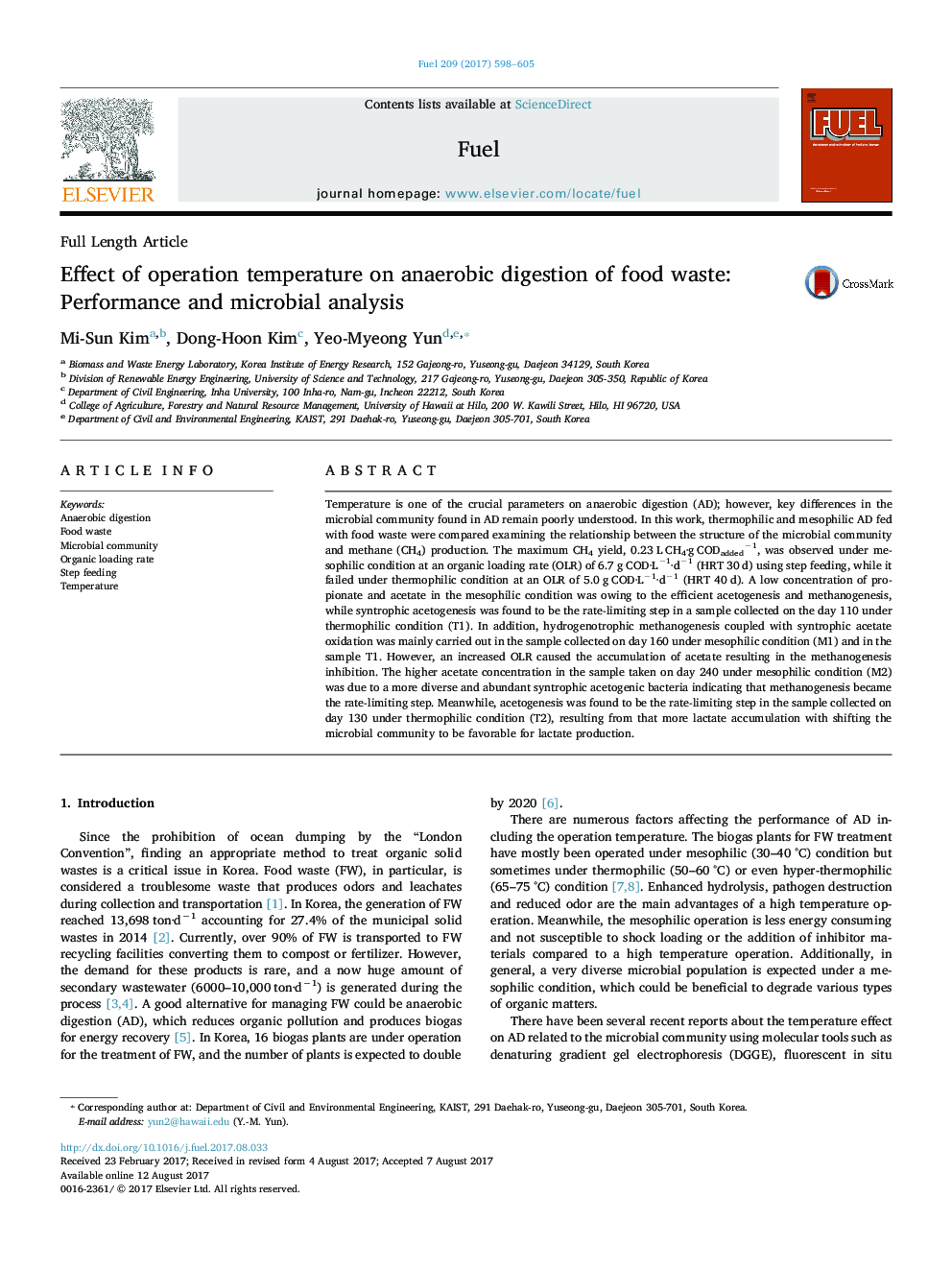| کد مقاله | کد نشریه | سال انتشار | مقاله انگلیسی | نسخه تمام متن |
|---|---|---|---|---|
| 6473981 | 1424955 | 2017 | 8 صفحه PDF | دانلود رایگان |
- The influence of the temperature and the OLR on AD fed with FW was examined.
- Mesophilic condition with step feeding had a higher capacity to handle a high OLR.
- Increased OLR caused the accumulation of acetate and inhibited methanogenesis.
- Increased acetate in M2 resulted from a more diverse and higher SAB abundance.
- More lactate accumulation in T2 was correlated to increase in lactate producers.
Temperature is one of the crucial parameters on anaerobic digestion (AD); however, key differences in the microbial community found in AD remain poorly understood. In this work, thermophilic and mesophilic AD fed with food waste were compared examining the relationship between the structure of the microbial community and methane (CH4) production. The maximum CH4 yield, 0.23 L CH4·g CODaddedâ1, was observed under mesophilic condition at an organic loading rate (OLR) of 6.7 g COD·Lâ1·dâ1 (HRT 30 d) using step feeding, while it failed under thermophilic condition at an OLR of 5.0 g COD·Lâ1·dâ1 (HRT 40 d). A low concentration of propionate and acetate in the mesophilic condition was owing to the efficient acetogenesis and methanogenesis, while syntrophic acetogenesis was found to be the rate-limiting step in a sample collected on the day 110 under thermophilic condition (T1). In addition, hydrogenotrophic methanogenesis coupled with syntrophic acetate oxidation was mainly carried out in the sample collected on day 160 under mesophilic condition (M1) and in the sample T1. However, an increased OLR caused the accumulation of acetate resulting in the methanogenesis inhibition. The higher acetate concentration in the sample taken on day 240 under mesophilic condition (M2) was due to a more diverse and abundant syntrophic acetogenic bacteria indicating that methanogenesis became the rate-limiting step. Meanwhile, acetogenesis was found to be the rate-limiting step in the sample collected on day 130 under thermophilic condition (T2), resulting from that more lactate accumulation with shifting the microbial community to be favorable for lactate production.
169
Journal: Fuel - Volume 209, 1 December 2017, Pages 598-605
